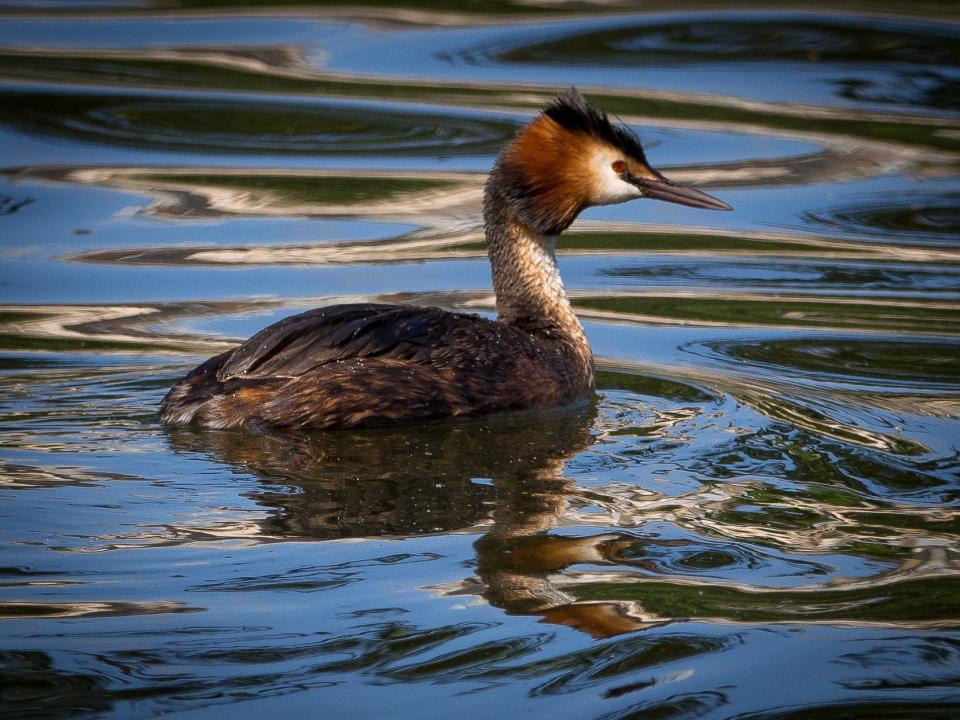Wild in the city: Spare a thought for nature’s fowl hairdos

Your lockdown hair may be circling around the nape of your neck and hanging over your ears, but spare a thought for the great crested grebe, which looks like this in normal times. This is a peculiar-looking waterbird with large plumes on its head and a ruff around the neck that really resembles a mod haircut.

This develops in time for the grebes to start flirting with one another. Their mating dance is one of the natural world’s real spectacles and you should be able to catch it on any of London’s big bodies of water, including in the Royal Parks and on the Thames.
The pairs of grebes shake their heads, plumes standing up with excitement. They mirror one another’s moves, before performing the ‘weed dance’ or ‘penguin dance’, where they rush at one another with beaks full of weeds, push their chests together and rise up out of the water.
Grebes aren’t the only birds in London with questionable hairstyles. The wetlands in Barnes and a few other spots around the capital have good numbers of wigeon ducks around at this time of year. Fans of terrible early 2000s pop will recognise the wigeon’s plumage as the clear inspiration for Sisqó’s hairstyle in his hit single Thong Song. The male birds have a peroxide blonde streak on their heads. Sadly — or perhaps fortunately — they don’t have a special dance.
Wigeons aren’t as common as grebes, but then again, grebes nearly went extinct in this country. Those head feathers, known as tippets, were sought after for millinery. The plight of this bird caused so much concern in the late 19th century that two women, Emily Williamson and Eliza Phillips, set up groups protesting against the trade in plumage. Their campaigns joined to become the Royal Society for the Protection of Birds.
The great crested grebe is today safe to dance away on the water thanks to those two women, even if they’d be dismayed that their own species hasn’t quite sorted its own problems out yet.
Isabel Hardman is assistant editor of the Spectator and author of The Natural Health Service
Read More
Wild in the city: Cherry plum tells us spring has begun
Best bird feeders of 2021 for small birds in your garden
Wild in the city: Coltsfoot marks the start of months of smiling

 Yahoo Sport
Yahoo Sport 





































